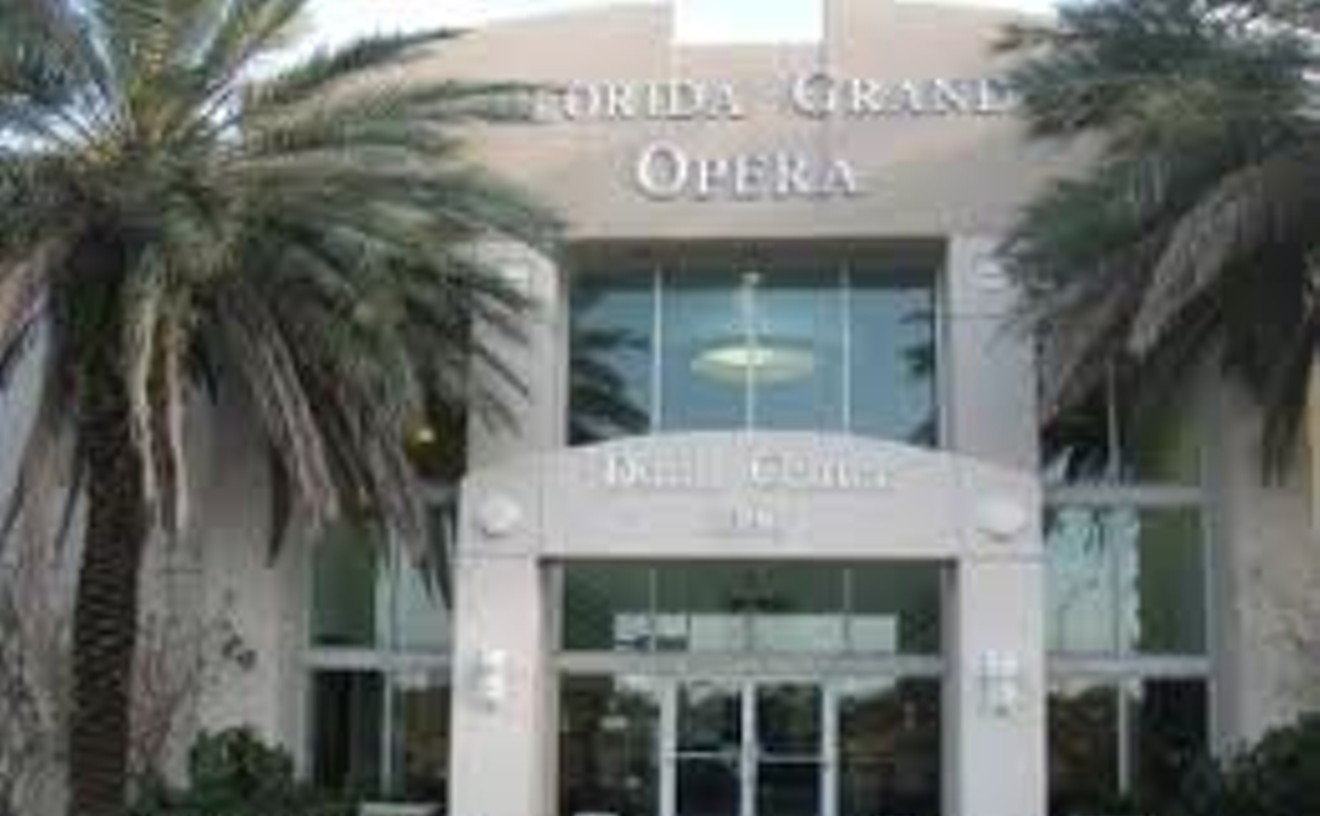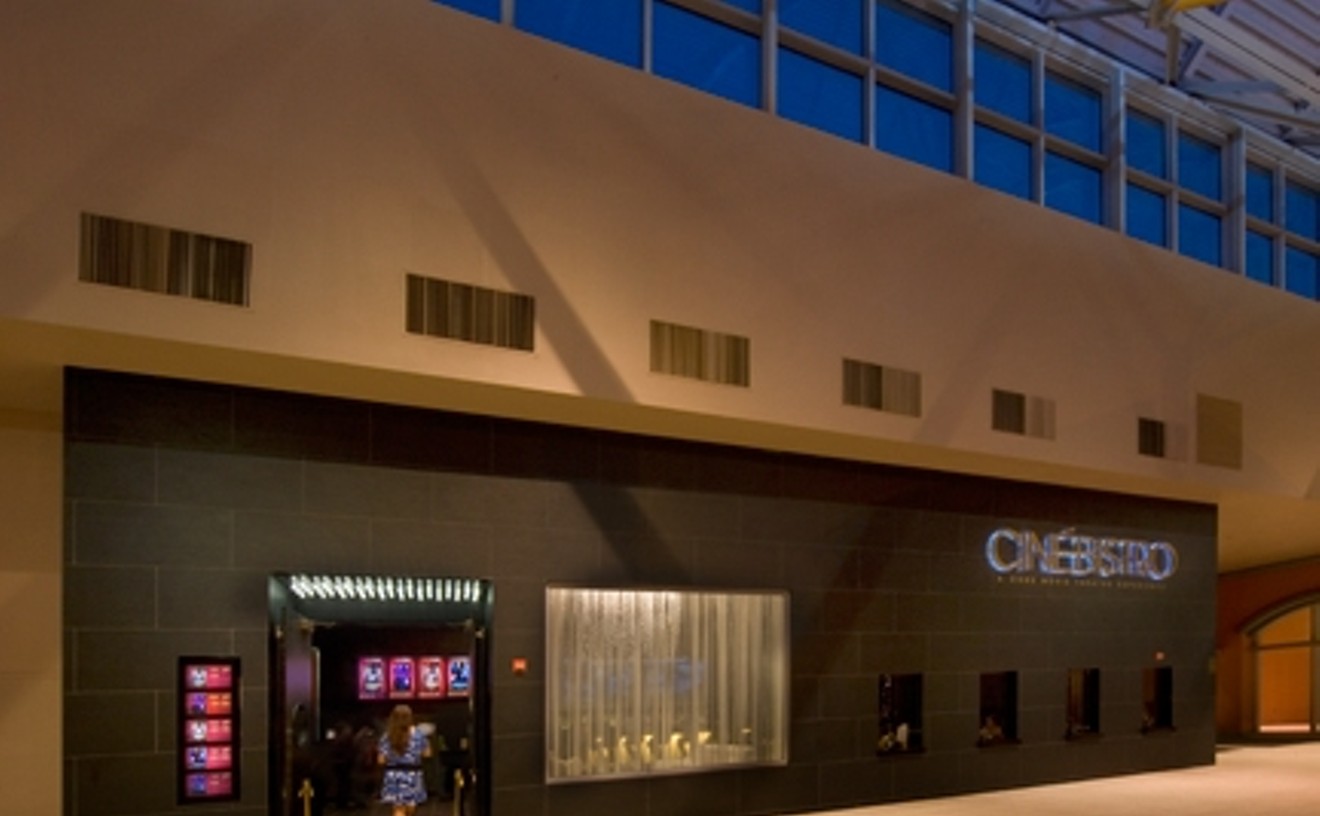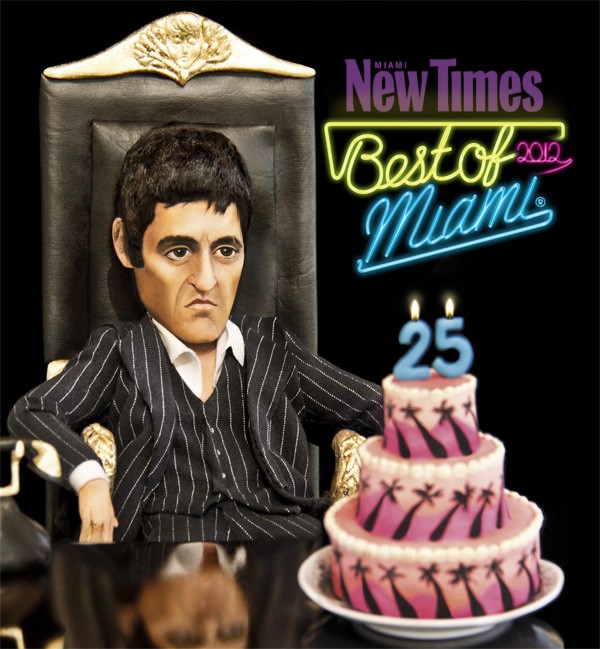From evoking the slow-drip symphony of a summer shower with an array of suspended buckets to creating paintings using a torrential downpour in her native Brazil, Rivane Neuenschwander's first museum survey enchanted Miami Art Museum visitors through its beguiling and interactive nature. "A Day Like Any Other" featured 11 major works created over the past decade. In them, Neuenschwander, a storyteller with an eye for the cinematic, explored themes of time's fleeting nature and concepts of mapping, measuring, trading, and categorization. At once poetic and haunting, her works included dreamy constellations conjured by using a hole puncher on literary classics as well as an Orwellian installation based on a '70s Francis Ford Coppola thriller that riffed on notions that Big Brother is alive and well. Adding a palpable noirish feel to the engaging exhibit, Neuenschwander even recruited a forensic artist from the Palm Beach Sheriff's Office, who collaborated with MAM visitors to re-create memories of their first flames. The result was a gallery filled with portraits of perps guilty of breaking hearts.
Best Emerging Artist
Domingo Castillo
If you found yourself in the Design District this past Art Basel, you might have stumbled across one of Domingo Castillo's street posters supposedly advertising a missing cat but actually leading to an alternative space, Dimensions Variable. Castillo created the poster as part of the exhibition "G-Spot: Get the Green Light," which highlighted Miami's rising talent during December's citywide arts confab. Castillo's cat was just one of the red herrings that fill the inscrutable artist's works. At Dimensions Variable, the 23-year-old set up a makeshift karaoke bar for an exhibit titled "Duets." But unless you personally knew Castillo or were the guest of one of his friends, your dreams of joining him on the microphone for a rendition of "Cat's in the Cradle" were dashed. In fact, spectators outside the gallery were the ones who truly got to experience the spirit of the art, which was in fact a commentary on the exclusivity of Basel. Castillo is also one of the founders behind the End/Spring Break, a nomadic art project responsible for some of the quirkiest and most thought-provoking cultural programming in the Big Mango the past year.
Best Actress
Christina Alexander
In Djanet Sears's racially and sexually charged Harlem Duet, Christina Alexander of the M Ensemble portrayed Billie, a woman scorned by her man and betrayed by her mind. While dealing with her husband Othello leaving her for his white co-worker, Billie's mind is in constant flux, unstable and deteriorating, while an uneasiness in her perspective on race throughout the years simmers beneath the surface. A character this complex and layered demands an actress to walk the fine line of sanity and lunacy, of love and hate, and of grace and rage. With her malleable expressions and darting, vulnerable eyes, Alexander was able to capture perfectly the delicate balance of Billie's perception of Othello's betrayal — not just that he left her, but that he left her for an intellectually equal white woman — while confronting him with her own viewpoints on interracial relationships. She deftly allowed Billie's psychosis to seep in gradually, staying even-keeled when confronting Othello, even as she wrestled with her personal demons in solitude, while plotting her revenge. A richly drawn character such as Billie demands versatility, and Alexander's portrayal was a delicate balance of sincerity and maddening rejection.
- 6101 NW Seventh Ave., Miami, 33127 Map
- 786-773-3161
- www.themensemble.com
Best International Arts Project by Locals
Kulturpark
At an abandoned amusement park in the former German Democratic Republic, weeds cover roller coasters, and an orchard of colossal toppled, graffitied dinosaur statues is reminiscent of the fall of the Berlin Wall. The surreal landscape is a model playground for artists to explore, and to Miami's Anthony Spinello and Agustina Woodgate, the "Kulturpark" represented the ideal public art project. It was also a perfect vehicle to launch South Florida talent onto the international stage. The local duo joined forces with Elsewhere Collaborative's George Scheer and Stephanie Sherman to transform the dilapidated East Berlin landmark into a sustainable, cultural gathering place overflowing with art. The organizers were joined by a collaborative team of more than 30 Berlin and U.S.-based creative types — including several hailing from the 305 — in the ambitious undertaking. They raised funds for the project and are planning a program for New World School of the Arts students to visit the site and have recruited the folks behind the Magic City's own End/Spring Break to weigh in with an experimental radio program as part of Radio Espacio Estacion, Woodgate's online radio platform for the multiculti swap. Don't be surprised if these art-scene ambassadors soon return with plans to invite their Berlin cohorts to leave their marks on our side of the Atlantic.
Best Arts Collective
RAW: Natural Born Artists
Here's the funny thing about arts in Miami: As the scene expands, it becomes harder and harder to break in as a new talent. After all, the more artists there are in this city, the more people are competing for attention. Much like Survivor, if you don't have an alliance, you're likely to get voted off the island. So RAW: Natural Born Artists did the arts community a solid when it launched in May. "My responsibility is to find great artists to represent Miami," spokesperson Rosana Emanuelli says. "It is going to be a little bit of everything." Everything, in this case, includes visual art, as well as music, fashion, film, hair, makeup, and performance art. And that's not because RAW organizers were too flighty to narrow things down. (Well, maybe it was in part — they are creative types, after all.) The group's inaugural event, which took over Design District nightclub the Stage in May, boasted musical performances by the Dude and the Deadly Blank, live painting by Floyd the Rock Artist, body art by Stay Sea Love and Pamela Trent, and art exhibits on just about every wall in the place. And nearly all of it was for sale or hire on site, providing the artists with the one thing all artists need: a marketplace. As perks of joining an arts alliance go, it doesn't get any better than that.
Best Street Artist
Ruben Ubiera
What makes Ruben Ubiera so special? He eschews traditional canvases for urban-associated items such as the sides of buildings, skateboards, and scrapped wooden fencing. But then, so do a lot of painters. The difference is that his work gives a touch of humanity to city corners that would look otherwise desolate. His signature tag isn't just a name scrawled in spray paint; it's the combination of his inimitable style and unexpected subject matter (think giant gorillas). This artist's work is one part graffiti art and one part classical illustration fused with plenty of Miami soul. Born in the Dominican Republic, Ubiera came to South Florida by way of New York City to attend the Art Institute of Fort Lauderdale on a full scholarship. His career as an artist began traditionally, rather than in the DIY manner of most street artists. But his vision of Miami through overlapping abstractions and collages is more at home on the sides of Wynwood's buildings and in the neighborhood's lesser-known art fairs than in traditional art spaces. In the sterility of a gallery, his work reads like the work of a graphic novelist surveying Miami one portrait at a time. And that's cool and all. But it's best viewed within the world that inspired it, where the imperfections of the raw wood and 3-D effect of the skateboards he paints complement their surroundings, and vice versa. It's street-inspired art that, in a way, inspires the street itself.
Best Arts Outreach
Florida Grand Opera

Social media innovations. Flash mobs. Wynwood Second Saturday Art Walk performances. They sound like the attention-getting tactics of a young start-up arts collective. But the cultural organization that's making the biggest push for new audiences this year isn't a new one. In fact, it's been around for 71 seasons. It's Florida Grand Opera. FGO wants your ass in its audience, and it's going to great lengths to achieve it. In February, the opera's performers infiltrated Miami International Airport as part of the Knight Foundation's Random Acts of Culture. Dressed in plain clothes, they emerged from café lines and waiting areas to perform six times at gates throughout the terminals, to the delight of travelers who otherwise had nothing but stale coffee and flight delays to look forward to. FGO followed that spectacle with an announcement that was truly uncharacteristic, especially for an artistic medium as traditional as opera: The company was offering special seating at its shows for patrons who wanted to be able to use their cell phones, tablets, and other electronic devices during the performance. Tech-obsessed culture seekers could geek out to their hearts' content, sharing photos, tweeting, and even live-blogging from the shows themselves. Next came FGO's performances at the Dorsch Gallery during Second Saturday Art Walk in April, a showcase designed to appeal to an unlikely audience — hipsters. The Dorsch was packed for every performance that night. In an arts community as rapidly evolving as Miami's, innovative ideas are the only thing that'll hold anyone's interest for long.
- 8390 NW 25th St., Miami, 33122 Map
- 800-741-1010
- www.fgo.org
Best Film Festival
Miami International Film Festival
At the last edition of the Miami International Film Festival, a Chilean film called Bonsái took home the big prize. But let's be honest: We were all winners. Over the course of a week and a half, we had the opportunity to watch more than 100 movies. And not just any movies — films vetted by MIFF's selection committee that were specifically designed to appeal to a local Miami audience. We got to feel pretty damn special about it too, because plenty of those movies made their South Florida premiere, their U.S. premiere, their North American premiere, and, yes, even their very first screening anyplace in the world right here in the Magic City. (The Showtime TV drama Magic City also hosted a red-carpet screening of its pilot episode at this year's fest.) The Miami International Film Festival is the biggest movie party in town in terms of numbers of films, special events, and celebrities who trek to the tropics for red-carpet appearances and post-screening Q&A sessions. Though we love the other, more niche-focused festivals that come through town each year, MIFF is the one that offers the broadest vision of the world from a South Florida point of view. That's a vision that's hard to beat.
Best Art-House Cinema
O Cinema
Miami's art-house scene has grown exponentially over the past year, and O Cinema is leading the way. The Wynwood theater, which opened only two years ago, is already keeping up with its peers in the 305, bringing national and international indie films to town. In the past 12 months, it has shown off buzz-worthy festival favorites such as Lars von Trier's Melancholia and niche films like Tomboy, which made waves on the GLBT scene. But it's O Cinema's focus on Miami — both its filmmakers and its audience — that sets this art house apart. From the best of the Borscht Film Festival's shorts, to a documentary featuring the badass local NSFW rapper Blowfly, to March's ten-year Rakontur retrospective, O is clearly devoted to showing off our city. And not just its film side — the theater's OMG Dinner and a Movie series lets viewers pig out on food by local chef gone big Michael Schwartz, making it the only theater in Miami where you can enjoy a bona fide dinner (read: not just popcorn and hot dogs) with your show. The folks at O Cinema clearly love the Magic City as much as we do, and that only makes us love them more.
Best Movie Theater
CineBistro at Dolphin Mall

Dinner and a movie. It's been a classic date combo since the early days of the silver screen. You fill up on tasty food, take in a rom-com while you digest, and if all goes well, return home to get it on. But this is Miami, where all rarely goes well. Traffic sucks, you can get caught in a rainstorm at any second, and public transportation is essentially nonexistent — all of which means getting you and your date from the restaurant to the movie theater can be a frustrating, and potentially sex-sabotaging, process. Unless, that is, you've taken your date to CineBistro, where the restaurant is the movie theater and vice versa. CineBistro shows all the big-name movies you'll find at every other theater in the 305. But show up at the Dolphin Mall location at least 30 minutes before showtime and you can select from a full menu of appetizers, main courses, and desserts to eat while you watch. There's also booze galore: wine, beer, and specialty cocktails. So you get to watch a movie with a real drink in your hand, as opposed to a Sprite bottle filled with vodka that you smuggled in. And you won't have to worry about kids crying or shuffling off to the bathroom every five minutes, because this theater doubles as a bar, so CineBistro movies are 21-plus only. It all adds up to the most convenient, hassle-free movie experience in Miami — getting there, getting fed, and getting through a whole feature film without annoyances. Getting laid afterward is, of course, up to you.
- 11471 NW 12th St., Miami, 33172-6900 Map
- 305-455-7373
- cmxcinemas.com





